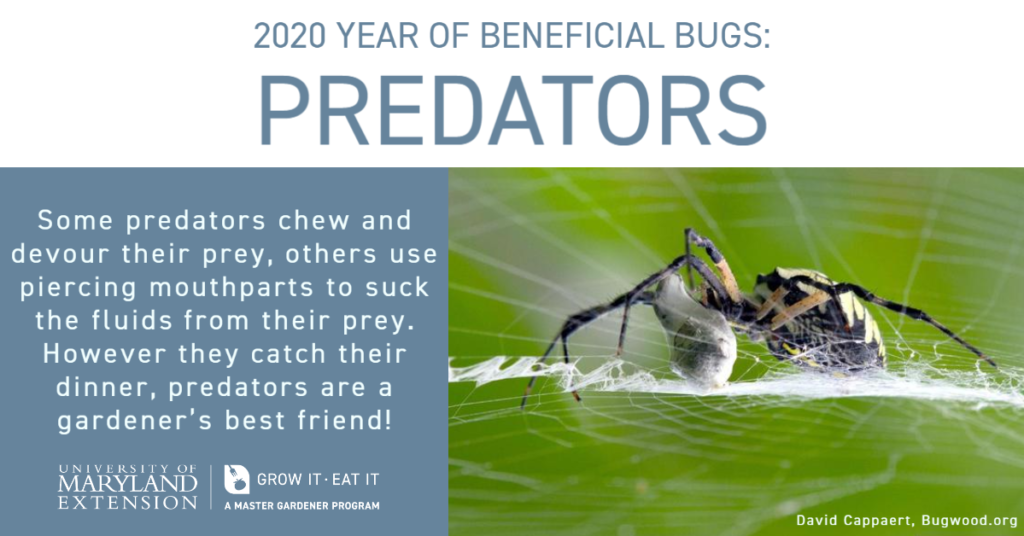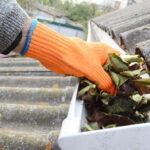Let spiders help in your vegetable garden
Thanks to the University of Maryland / Maryland Grows this article on how to let spiders help in your vegetable garden.
A few years ago during the early spring, my brother, mother, and I noticed several quarter-sized, brownish-colored egg cases in our high tunnel. Our research taught us they were gifts from black and yellow garden spiders, Argiope aurantia. These spiders are also called yellow garden orb-weavers, writing spiders, or zipper spiders. This made sense, as the tomato vines are trellised to 8 feet high. They provide the perfect environment for these magnificent arachnids. Furthermore, these spiders spin large circular webs, high off the ground, which contain a highly visible, zig-zag pattern in the center that is called a stabilimentum.

We assumed that the eggs had hatched the previous fall. And we opted to not bother them and go about cleaning up and preparing for the new growing season. Little did we know, each egg case contained hundreds of baby spiders just waiting to make their escape. And that happened later that spring and left our high tunnel completely overrun with spiders!
Fortunately, these black and yellow garden spiders are beneficial in a vegetable garden.
Spiders prey on all kinds of insects including flies, cucumber beetles, brown marmorated stink bugs, and sometimes even butterflies. Black and yellow garden spiders are not aggressive towards people — although, that does not mean they are not a bit intimidating, especially when you run your face smack dab into the beautiful web while picking tomatoes!
Orb-weaver spiders spend their days sitting in their perfectly shaped webs, or nearby on the ground, waiting to catch an unassuming insect, which is immobilized, killed, and wrapped in silk to be consumed later. In addition, they are most active in the cover of the night and are great additions to your garden!

Finding Webs
Webs will begin showing up in mid-summer and remain until the first frost. In our high tunnel, they are protected from most of the wind and rain that could normally damage a web. In your yard and garden, look for egg masses in secluded areas that you don’t visit very often. They are usually located several inches off the ground, maybe camouflaged with tall grass, at the edge of a woods line. Consequently, they may be found under bucket rims or plant containers.

As you begin cleaning up your yard or garden this spring, be on the lookout for egg masses of all types. Take particular care locating these amazing black and yellow garden spider egg cases. In addition, be forewarned. There are probably hundreds of spiders just waiting to make their exit. From my experience, wherever the spiderlings exit they will live for the next 1-2 years. Don’t want them in the area where they are located? Gently pick up the egg case and move it to an area where they can thrive.
Predators!

Embrace the beautiful cycle of life and be ready to capture pictures of some beautiful spiders in your garden this year. In conclusion, all types of spiders are predators and considered beneficial in the garden! Check out more information on spiders on the Home & Garden Information Center website.
This year the University of Maryland Extension Master Gardener Grow It Eat It program is celebrating the little creatures that help us grow what we like to eat! Whether they are pollinating our plants or devouring pests, we couldn’t grow much to eat without the help of beneficial insects. Learn more about the Grow It Eat It program.
By Ashley Bodkins, Senior Agent Associate and Master Gardener Coordinator, Garrett County, Maryland, University of Maryland Extension








Recent Comments